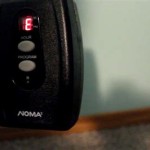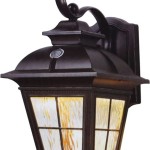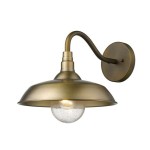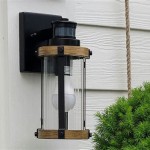Best Way To Build an Outdoor Fire
Building an outdoor fire can be a rewarding experience, providing warmth, ambiance, and a focal point for gatherings. Whether for cooking, warmth, or simply enjoying the mesmerizing flames, a well-built fire requires planning and proper execution. This article outlines best practices for constructing various types of outdoor fires, emphasizing safety and environmental responsibility.
Choosing the Right Location
Selecting an appropriate location is paramount for fire safety. A safe fire site should be at least 15 feet away from any flammable materials, including trees, overhanging branches, dry leaves, and structures. Ideally, the location should be on a non-flammable surface such as bare earth, gravel, or sand. Check local fire regulations and obtain any necessary permits before starting a fire. Wind conditions should also be considered. Avoid building a fire on windy days, as embers can easily spread and ignite surrounding vegetation. A designated fire pit or ring is the safest option and is often required by local ordinances.
Gathering Materials
A successful fire relies on three primary types of fuel: tinder, kindling, and fuelwood. Tinder consists of easily ignitable materials that catch a spark and create the initial flames. Examples include dry leaves, pine needles, small twigs, cotton balls dipped in petroleum jelly, or commercially available fire starters. Kindling consists of small sticks, gradually increasing in diameter, that help build the flames and ignite the larger fuelwood. Fuelwood provides sustained heat and comprises larger logs. Choose dry, seasoned wood for the best results, as green or wet wood produces excessive smoke and burns less efficiently. Avoid using treated lumber, as it can release harmful chemicals when burned.
Building the Fire Structure
Several effective methods exist for structuring a fire, each with its advantages. The teepee method involves leaning kindling against each other, forming a cone shape with tinder placed in the center. This structure allows for good airflow and easy ignition. The log cabin method involves stacking kindling and fuelwood in alternating perpendicular layers, resembling a log cabin. This method creates a sturdy and long-lasting fire. The lean-to method involves placing a larger log or rock as a windbreak and leaning kindling against it, with tinder placed underneath. This method is particularly useful in windy conditions. Regardless of the chosen method, ensure adequate spacing between the materials to allow for proper airflow.
Starting the Fire
Once the fire structure is built, light the tinder using a long match or lighter. Shield the nascent flames from wind, allowing them to grow and ignite the kindling. Gradually add larger pieces of kindling as the fire builds, and finally, add fuelwood once the kindling is burning strongly. Avoid overloading the fire with too much fuelwood at once, as this can smother the flames. Patience is key; allow the fire to establish itself before adding more fuel. Never use accelerants such as gasoline or kerosene to start a fire, as these can cause dangerous flare-ups and are extremely hazardous.
Extinguishing the Fire
Properly extinguishing a fire is just as important as building it. Allow the wood to burn down to ash, then pour water slowly and steadily over the embers, stirring them with a shovel or stick to ensure all embers are extinguished. Ensure that no embers are glowing or producing smoke. Douse the surrounding area with water as well to prevent any residual heat from reigniting dry vegetation. Do not leave the fire unattended until it is completely cold to the touch. Dispose of the ashes responsibly, ensuring they are cold before placing them in a designated container or scattering them widely.
Firewood Selection and Storage
Selecting the right firewood significantly impacts the fire's quality and efficiency. Hardwoods such as oak, maple, and hickory burn longer and hotter than softwoods like pine and fir. Seasoned wood, which has been dried for at least six months, is crucial for a good fire. Proper storage prevents wood from reabsorbing moisture. Store firewood in a dry, well-ventilated area, elevated off the ground to prevent rot and insect infestation.
Respecting the Environment
Building a fire responsibly includes minimizing environmental impact. Use only locally sourced wood whenever possible to avoid transporting pests and diseases. Avoid burning trash or other materials that can release harmful pollutants into the air. Clean up the fire site thoroughly, removing any debris or leftover materials. Leave the area as pristine as you found it, demonstrating respect for the natural environment. Adhering to these practices ensures a safe and enjoyable fire experience while protecting the environment.

Stop The Smoke Do This To Your Fire Pit
:max_bytes(150000):strip_icc()/outdoor-fire-pit-ideas-00ba790bf8f14670a9e78ecdad266497.jpg?strip=all)
31 Diy Fire Pit Ideas And Plans For Your Backyard

How To Build A Fire Pit That S Easy And

How To Build An Amazing Diy Fire Pit Without Breaking The Bank

12 Best Outdoor Fire Pit Ideas Diy Backyard

5 Creative Diy Fire Pit Ideas For Your Warm Weather Backyard Hangouts

How To Build An Outdoor Fire Pit The Best Way

How To Build An Amazing Diy Fire Pit Without Breaking The Bank

Best 38 Low Cost Diy Fire Pit Ideas And Plans For Yard

How To Build An Easy Backyard Fire Pit
Related Posts







